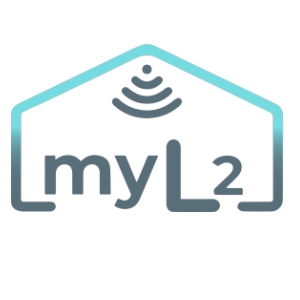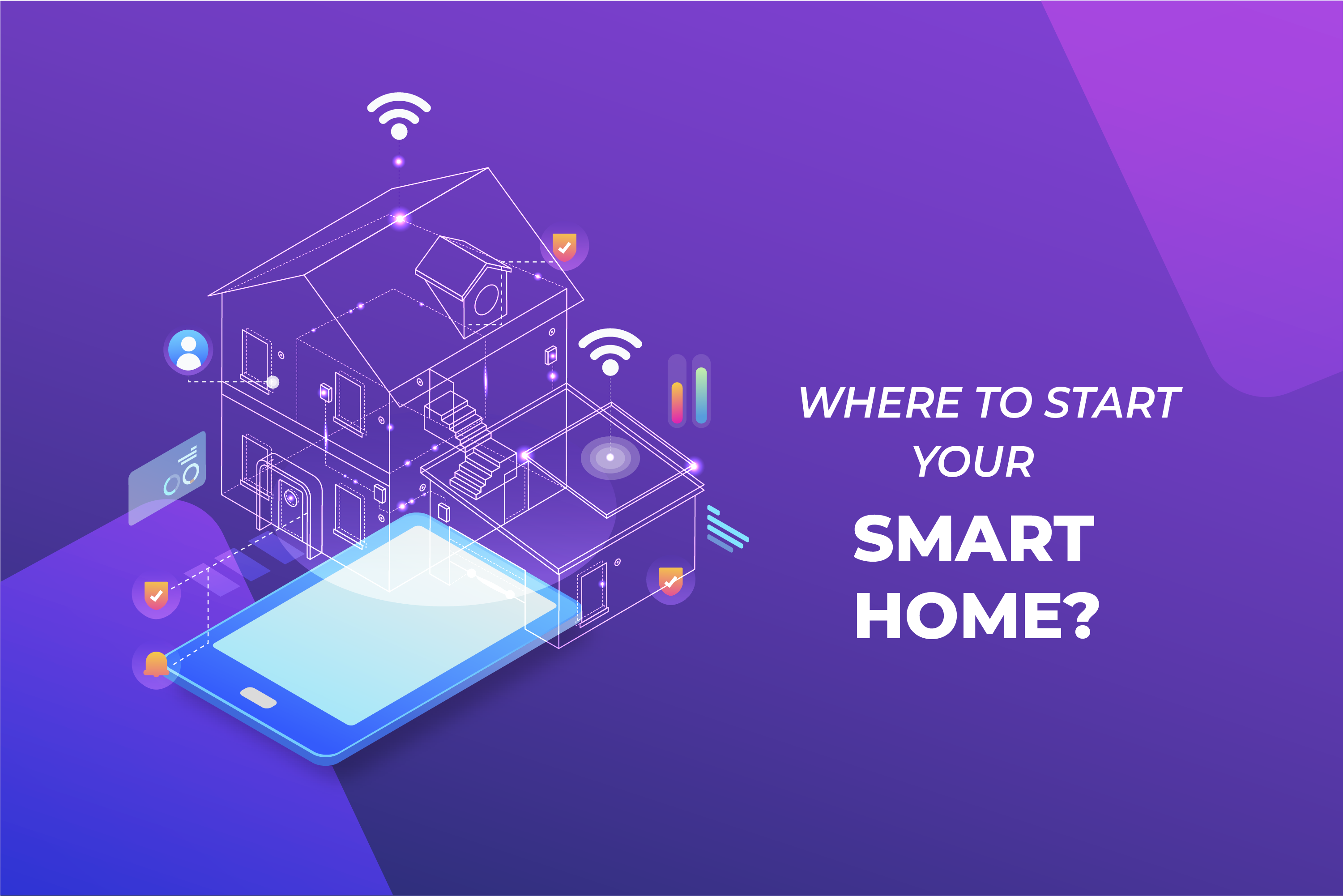The hardest part of starting to automate your home is the initial research.
Often, especially at the beginning, you’ll ask yourself:
- What technologies to use ? Wi-Fi, Bluetooth, Zigbee, Z-Wave, KNX?
- What brands are better ? Samsung, Apple, Xiaomi, Philips Hue, others ? Should I choose a closed setup like Apple, or an open setup like Samsung ?
- Should I automate in small steps or do the whole house at once ?
- How much does it cost ?
We’ll try to answer these questions now, but first of all:
What is a Hub?
The Hub is the central component of the automation system. Many call it the ‘brain of your smart home’, because it’s the place where you will configure the automation rules.
The Hub can be a dedicated device, either a Controller like Samsung SmartThings, some software installed on a Raspberry PI or a cloud service like IFTTT.
Don’t worry if you don’t understand it all, things are simpler than they seem.
Get familiar with your space!
It’s important to know what area you’re automating, to understand whether it will be covered by the Hub’s signal (if you’re using technologies like Zigbee and Z-Wave) or the router’s signal, if you’re using Wi-Fi products.
Pay special attention when your home is divided into two or more floors, you might need to install dedicated signal repeaters, or even more than one Hub.
Decide on the budget and the degree of complexity!
Depending on the solution you choose, home automation may involve a higher cost in a shorter time or a lower cost, but with a greater effort in doing everything by hand.
Match the budget to your needs and especially to your level of knowledge.
If you don’t mind writing some Linux commands or lines of Java code, choose cheaper programmable devices. If you want to see an example, read How to Install a DTH (Device Type Handler) in Samsung SmartThings, if you find that too hard, choose simpler components.
If you want to have a pleasant and simple installation experience, choose devices from the same brand or compatible, for which you do not have to put in extra effort. The result will be limited in options, but you will still be pleased with it.
Also important is your ability to connect electrical circuits. If you can handle connecting cables to terminals, choose Smart Relays, if not, choose Smart Plugs.
What technologies to use?
The short answer: Zigbee and Z-Wave.
Why ? These technologies are built for Smart Home systems and many devices are wireless, so you can stick them or place them anywhere without having to run wires for them.
Also, automatically, the network that these devices make up is completely separate from your Wi-Fi network, adding an extra level of security.
Another advantage is the ability to connect the devices in a MESH type network – permanently connected devices, such as Smart Sockets and Smart Bulbs, become repeaters and extend the signal of the entire installation.
If you do can’t find the device you need in a Zigbee or Z-Wave version, you can also choose the Wi-Fi version, but first make sure it is compatible with your Hub.
If you have many Wi-Fi devices, use a high-quality Wi-Fi Router, minimum 802.11ac standard with large coverage, or add repeaters to get the signal to where you need it.
A good idea is to put your Smart Home devices (especially cameras, if you have any) on a separate Wi-Fi network from the one you use on your laptop or phone, to stream to the TV or that you give your friends access to.
Avoid using Bluetooth devices, they’re usually only accessible when your phone is close by and are sometimes unstable (especially if you choose a cheap version), so they’re not a good long-term investment.
The KNX protocol is an industrial standard dedicated to professional installations. It relies heavily on cable communication and if you already have the house built and finished, it will involve major efforts to install. But it’s very solid and rarely fails, even if the devices come with a higher cost of purchase and installation.
Careful! In most cases the installation will have to be carried out by a qualified company.
What brands are better?
The brand of devices you choose will play an important role in the functionality you get but also in the total cost of the installation.
Every trusted brand has its advantages (otherwise it can’t stay afloat). A simple rule is to start with either a cheap solution (and regret less when “upgrading”) or a familiar solution (to integrate easily into your daily routines).
If you are already using Apple devices (iPhone, iMac, iPad, Apple TV, Apple Watch) and are in love with them, go for HomeKit-compatible solutions. This will allow you to immediately integrate new devices into your favorite ecosystem. The Xiaomi Aqara brand has almost all of the products you need and uses the Zigbee protocol; give it a try!
Be careful not to mix devices from Xiaomi Aqara (intended for the international market) with those from Xiaomi Mi (Mijia – intended for the Chinese market), as the Hubs are not 100% compatible and some Mi devices don’t work with HomeKit.
If you want a lot of functionality and to be able to integrate almost any device, choose Samsung. The SmartThings system (purchased by Samsung in August 2014) has besides the smartphone apps a web interface (SmartThings Groovy IDE) where you can write your own handlers (drivers, DTH) and smart apps. Details here: How to Install a DTH (Device Type Handler) in Samsung SmartThings.
Of course, you don’t necessarily have to use it, but you can!
Also, the Samsung Hub offers both Zigbee and Z-Wave connectivity, is compatible (with the appropriate DTH) with all Xiaomi Aqara or Xiaomi Mi devices, as well as many other brands (at the time of writing this article, there are already 400+ compatible brands and the number is continuously increasing). If something is not natively compatible, the ability to write your own DTH allows you to make almost any device work with SmartThings.
Philips Hue produces very high quality lights. It has other devices, but the most noticeable are the lights. These are directly compatible with SmartThings and can be used either with or without the Hue Bridge (the Philips Hub – which also connects to SmartThings). The advantage: if you already have a Samsung Hub, you don’t have to buy a Hue Bridge anymore. If all you need is to automate the lights, choose Philips Hue; although it’s more expensive, you will be very pleased with the results. You can get remote controls, motion sensors and soon sockets produced directly by Philips. In the future, when you want to extend you home automation setup, you can easily add a Hub and choose whether to keep or remove the Hue Bridge.
There are many manufacturers of smart home solutions on the market, if you have questions about a particular one, contact us on WhatsApp and we can help you make the right choice.
Should I automate in small steps or do the whole house at once ?
Surely only you can answer this. Here are some tips:
- If you’re working with a new construction, try to automate everything,
- If you rent, use as many wireless devices as possible; you can then take them with you when you move,
- If you have a lot of non-smart appliances, use sockets or relays to automate them,
- If you want to automate doors, locks or access methods, use reliable products (Yale, Danalock, August, etc.) and avoid no-names at all costs,
- If you are not sure where to start, start with lights, you will see the effect immediately,
- If the budget is small, start with small steps, with the devices that bring you immediate comfort (put a smart light bulb and two smart buttons, one at the door and one on the nightstand, you will smile every night at bedtime when you no longer have to get up to turn off the lights).
How much does it cost ?
Short answer:
If you choose to invest more time in the setup process, it will cost less.
If you want to see automations in action faster, it will cost more.
Of course, the cost depends a lot and how much functionality you want to automate.
You can buy a single Smart Wi-Fi Relay for 70-80 RON (~17 EURO) and use your mobile phone to program the lamp in the hallway to turn on when you arrive home.
Simple and useful automations, with more options start from 400 RON (~85 EURO), while fully equipping of a 3-bedroom apartment can go up to over 4000 RON (~850 EURO).
Go on www.myL2.ro to the kits category and choose a starter pack that suits you.
If none is to your liking, contact us by phone at 0737.746.107 or on WhatsApp and we will send you a personalized quote.
If you find this information useful, join the myL2 Tutorials facebook group and we’ll keep you updated with new guides every week.
You’re also invited to the Offers and Discounts facebook group, you will be the first to know about our promotions and offers!

